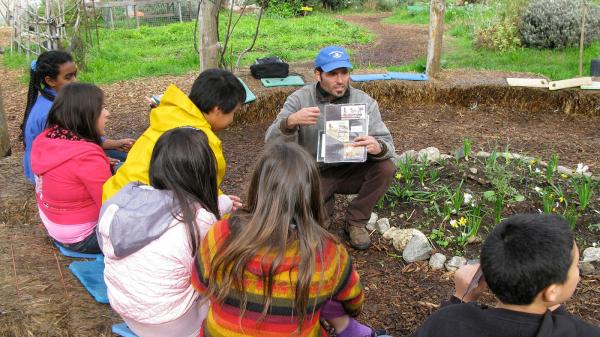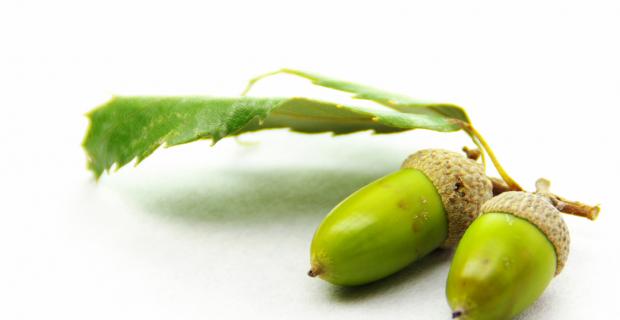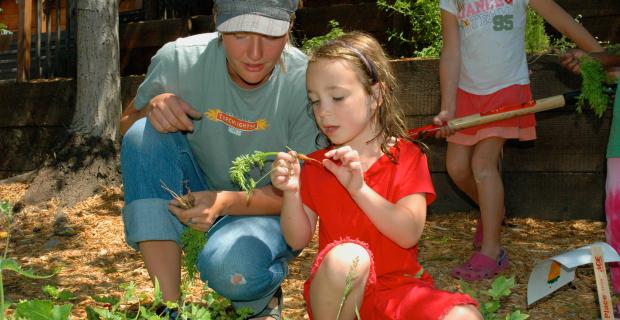A Checklist from "Smart by Nature: Schooling for Sustainability"

Each of the four major sections of the Center's book Smart by Nature: Schooling for Sustainability — Food, the Campus, Community, and Teaching and Learning — concludes with a list of eight to ten "Lessons Learned" from the experiences of the Center and the schools profiled in the book, along with "What You Can Do" suggestions.
See below for some examples based on those lists. For the complete lists, see Smart by Nature.
See also Five Steps to Becoming Smart by Nature.
FOOD
Lessons Learned from Food Systems Efforts
- Take the long view. Changing food systems structures and practices will probably take at least three years.
- Share the effort. A teacher shouldn't be expected to oversee the garden — scheduling, maintenance, and so on, on top of a full-time teaching load. Freeing someone (it could be a reliable volunteer) from other responsibilities improves the chances that the garden will continue after the initial enthusiasm wears off. Someone needs to maintain the garden during weekends or school breaks.
- Get to know your audience. Food service success depends on responding to "customers'" desires and preferences. Offering taste tests before introducing new menu items is crucial.
What You Can Do
- Read your district's wellness policy. Does it reflect your beliefs and hopes? If you have concerns about school food, who else (parents, students, teachers, nurses, administrators, board members, health or waste management agencies, civic organizations) shares them? Agree to work together.
- Meet with the district's food service director. Ask what you can do to help. Be persistent. Be polite. Listen, but be clear that you're not going away.
- Rethink the school day. Imagine a schedule with recess before lunch, adequate time to eat lunch, and quiet time after lunch.
CAMPUS
Lessons Learned from Campus Practices
- Language matters. Some audiences who find sustainability too distant a concept can be reached by talking about health, student performance, savings, or whatever addresses their deepest desires and concerns.
- Raise money the easy way. The easiest money to "raise" for campus greening is the money that's not spent. Address energy and resource conservation before looking for technological solutions.
- Fun is good. Games, competitions, and celebrations often work where moral suasion and invocations of responsibility don't.
What You Can Do
- Ask "What are we already doing?" Do an audit of your current sustainability practices. How can you build on that? What more do you want to do?
- Look for nature in your own backyard. Find the places, even if they're small, where nature is present on your campus. Get out of the classroom and into those places. Then make more of them.
- Think of your buildings as teaching tools. Involve teachers early in the planning process and design new or renovated campuses around what you want to teach and what kind of community you want to be.
COMMUNITY
Lessons Learned from Community Practices
- Create a big tent. The more of the school community that participates in decision-making and sustainability initiates, the more successful they will be.
- Identify your neighborhood allies. Organizations in the community surrounding the school (for instance, the farmers' market, the local food co-op, or community service agencies) are often willing to work with schools, but teachers may not have time to contact them. A volunteer or a partner institution can play an important role by making these connections.
- Expect to be surprised. Institutional change has its own dynamics, and there will always be surprises.
What You Can Do
- Appoint a sustainability coordinator. If possible, free a staff person from some responsibilities to concentrate on coordinating your efforts.
- Collaborate. Work together on sustainability efforts with other schools in your area. For example, purchasing cooperatively, organize speakers' bureaus, share resource databases, and join forces on projects.
- Use your community as a sustainability laboratory. Brainstorm with students about the indicators of the quality of life in communities. Then compare a local neighborhood with those indicators and ask what changes would make the biggest differences.
TEACHING AND LEARNING
Lessons Learned from Teaching and Learning
- Teaching through an environmental framework boosts test scores.
- Engage students. If teachers focus on the bad news about the environment, students close down. Giving students an opportunity to do something positive can keep students and teachers inspired.
- Sustainability is a perspective, not another new topic. Many of the ideas central to sustainability education are already being taught, without being named as such.
What You Can Do
- Start with your current efforts. Begin by identifying what you are already doing that fits with schooling for sustainability and build on that foundation.
- Give students concrete opportunities to make a difference. Help them create projects in which they do something useful, such as measuring the water quality of a local stream and presenting it to local officials who will use.
- Trust your instincts and invest in networks of relationships. Sustainability is, after all, a community practice.




